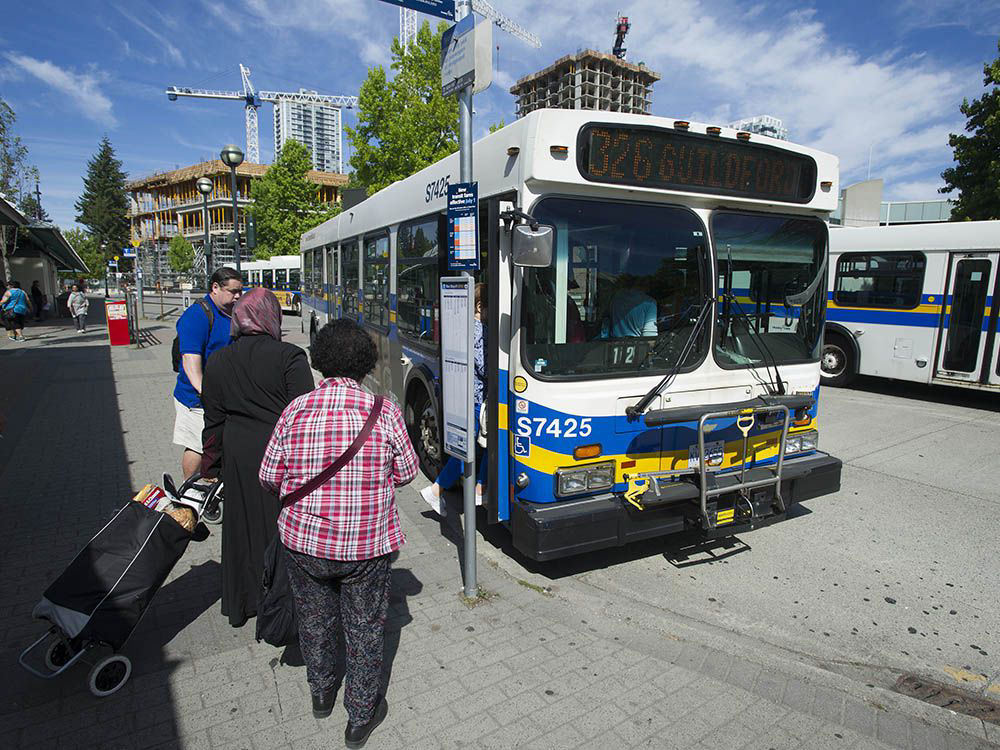
The capacity of TransLink’s expansion plans might be tested sooner than expected by Canada’s higher targets for immigration, according to a new report for the transit authority’s mayors council.
TransLink is estimating Metro Vancouver could see up to 50,000 new immigrants per year coming to the region, based on Canada’s targets for 500,000 new residents per year by 2025, compared with 36,000 per year between 2017 and 2021, according to the transit agency’s report.
And trends for the settlement of new immigrants show they’re landing mostly in rapidly growing communities south of the Fraser River that are on frequently served transit lines.
However, those sections of TransLink’s network are already struggling with overcrowding. Whereas ridership systemwide has only recovered to 84 per cent of levels experienced in 2019, ridership in areas south of the Fraser has surpassed pre-COVID-19 levels.
And if service can’t be expanded to meet that growth, residents in the region who tend to rely more on transit to start with will experience more overcrowding and frequent pass-ups at bus stops than they do now, according to the report, an update on system pressures received by TransLink’s mayors council on Friday.
“What changes, it just enhances the urgency to be moving forward on expansion, particularly south of the Fraser where our ridership is higher than it was in 2019,” said Sarah Ross, TransLink’s vice-president of planning and policy.
Ross said the updated figures don’t represent a big departure from expectations in TransLink’s Transport 2050 plan, with its immediate 10-year, $20 billion capital plan for expansion.
“This is not us saying we need to change our 10-year priorities’ plan, not at all,” Ross said.
However, the need to stay focused on the expansion plan has been telegraphed by TransLink’s experience with service south of the Fraser. In the last year, TransLink has reallocated service, trimming routes in slower-growing communities in the region to add 12 per cent to routes south of the Fraser.
“Every time we put out more service it’s taken up right away,” Ross said.
Implementing the R6 RapidBus service on Scott Road is one of the top priorities in that 10-year capital plan, but the update report comes at a time TransLink is trying to renew discussions with the province and federal government on how to pay for it.
TransLink’s mayors council meeting Friday was the same meeting at which chairman Brad West, mayor of Port Coquitlam, acknowledged receipt of the province’s $479 million emergency contribution to backstop the agency’s pandemic-driven shortfalls.
“It was important because the alternative to the province stepping-up was significant service reductions to our region, increased congestion and poor outcomes,” West said in his report to the meeting.
TransLink’s challenge will be to lobby Ottawa, in addition to Victoria, on supporting TransLink’s efforts to create a more sustainable funding model that doesn’t rely so heavily on regional fuel taxes that are due to decline as Lower Mainland drivers also adopt electric vehicles at a faster rate.
“We’ve talked at length about the funding model that TransLink is currently operating under being insufficient for the job ahead and in many ways has gotten us to where we are now,” West said.
